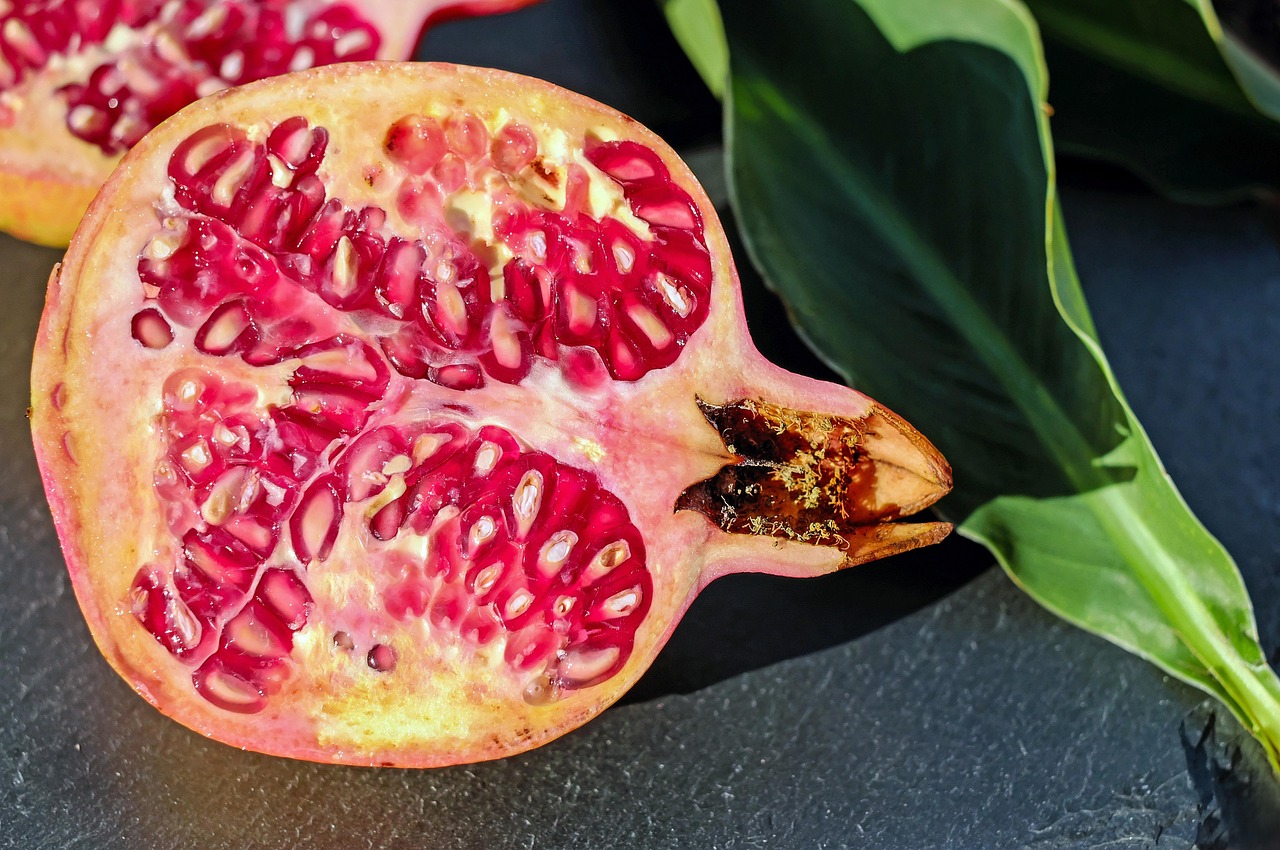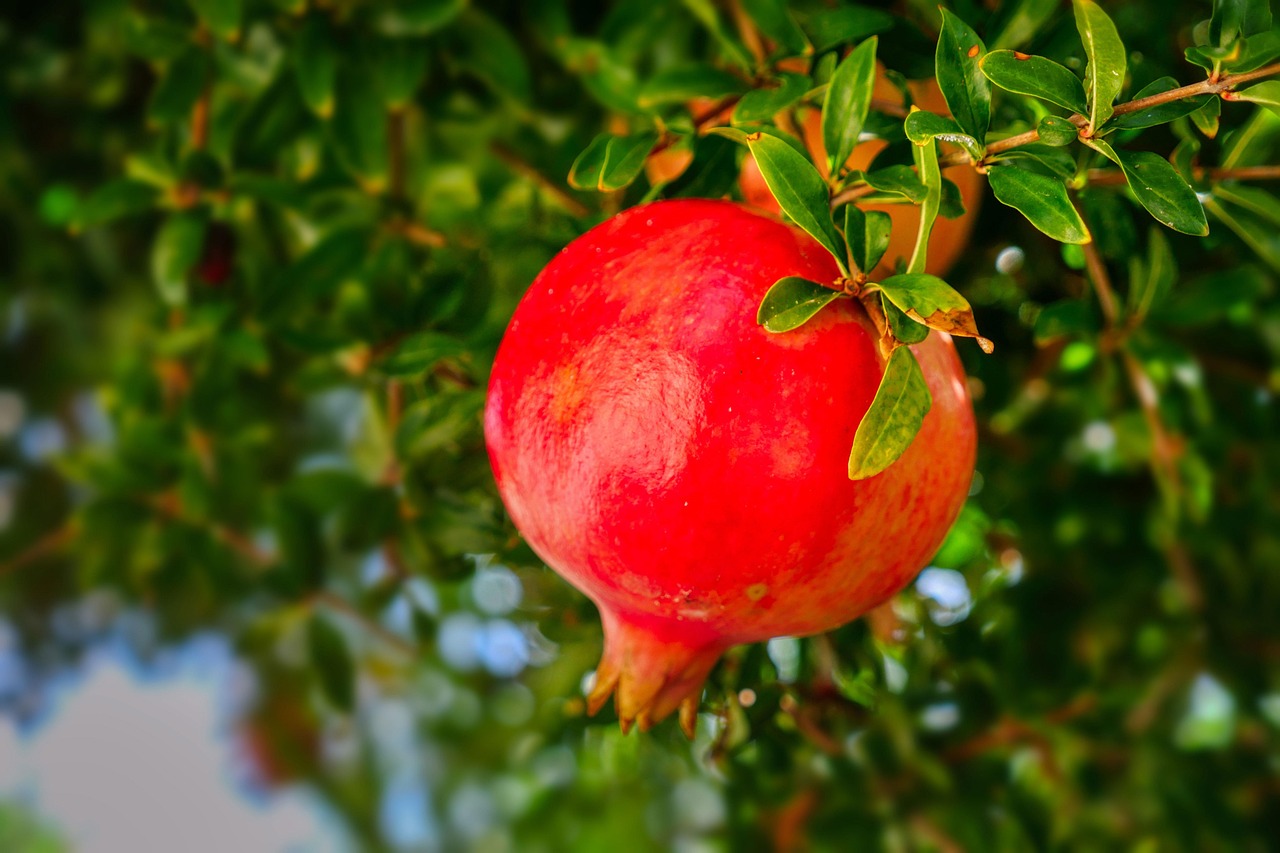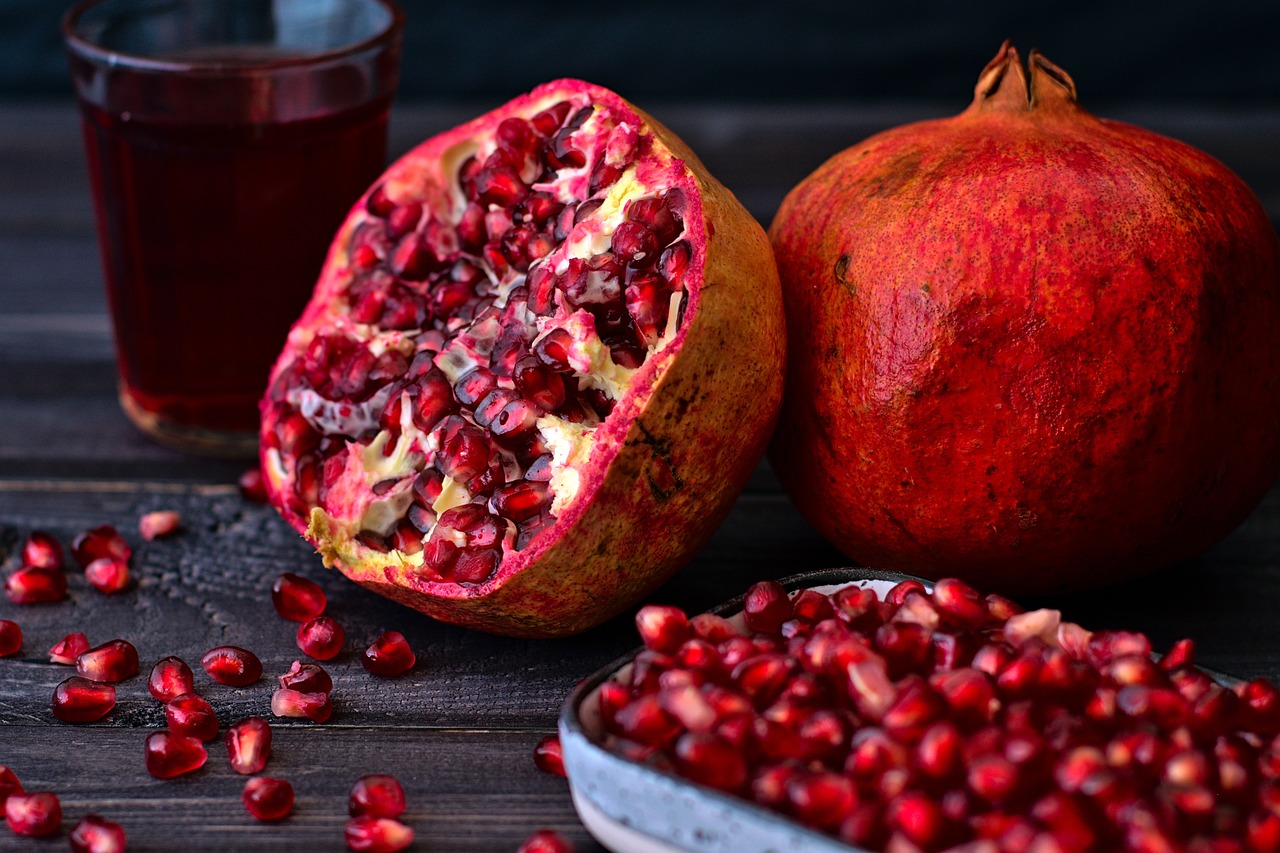Pomegranate trees can grow at a rate of 1 to 2 feet per year in hot, dry climates, depending on factors like soil quality and water availability.
Pomegranate trees (Punica granatum) are well-suited for hot and dry climates, making them a popular choice in regions with these conditions. These trees are known for their resilience and ability to thrive in arid environments. Their growth rates can vary significantly based on several factors, including climate, soil conditions, and care practices.

One of the main reasons for the pomegranate tree’s success in hot, dry climates is its deep root system. This allows the tree to access water stored deeper in the soil, enabling it to survive prolonged periods without rainfall. Furthermore, pomegranates are drought-tolerant once established, which adds to their appeal for gardeners in arid regions.
Factors Influencing Growth Rate
Several key factors can influence the growth rate of pomegranate trees in hot, dry climates. Understanding these factors helps gardeners optimize their cultivation practices for better yields and healthier plants.
- Soil Quality: Pomegranate trees prefer well-drained soil with a pH level ranging from 5.5 to 7.2. Soil that retains too much moisture can lead to root rot.
- Water Availability: While pomegranates are drought-resistant, they require regular watering during the first few years after planting. Once established, they need less frequent watering.
- Sunlight: These trees thrive in full sunlight. They require at least six hours of direct sunlight each day to grow optimally.
- Temperature: Pomegranates prefer warm temperatures and can tolerate high heat. However, extreme cold can damage young trees.
- Fertilization: Proper fertilization plays a crucial role in growth. A balanced fertilizer can promote healthy growth and fruit production.
The growth rate of pomegranate trees can be further enhanced by employing proper care techniques. Regular pruning helps maintain the shape of the tree and encourages new growth. Additionally, mulch can be used to retain soil moisture and suppress weeds around the base of the tree.

Growth Stages of Pomegranate Trees
Pomegranate trees experience different growth stages throughout their life cycle. Understanding these stages can help gardeners monitor progress and make necessary adjustments in care.
| Growth Stage | Duration | Description |
|---|---|---|
| Germination | 1-3 weeks | Seeds begin to sprout and develop roots. |
| Seedling | 3-6 months | Young plants grow leaves and establish roots. |
| Juvenile | 6 months – 2 years | Trees grow rapidly but may not produce fruit yet. |
| Mature | 2 years and beyond | Trees begin to produce fruit and reach full height. |
A mature pomegranate tree can reach heights of up to 20 feet and provides an abundant harvest of fruit. The first blooms typically appear during the second year of growth, with fruit production increasing as the tree matures. Gardeners should be patient, as it may take several years for the tree to reach its full potential.
In summary, pomegranate trees exhibit a growth rate of 1 to 2 feet per year in hot, dry climates when provided with optimal conditions. Understanding the variables that impact growth is essential for anyone looking to cultivate these beautiful and fruitful trees successfully.

Planting Pomegranate Trees
Proper planting techniques are vital for the successful growth of pomegranate trees, especially in hot, dry climates. The right methods can help ensure that the trees establish themselves effectively and grow at optimal rates. This section covers the best practices for planting pomegranate trees.
Choosing the Right Location
When selecting a location for planting pomegranate trees, consider the following factors:
- Sunlight: Choose a spot that receives full sunlight for at least six hours each day. This is essential for healthy growth and fruit production.
- Drainage: Ensure the area has well-draining soil to prevent waterlogging. Pomegranates do not like “wet feet,” which can lead to root rot.
- Protection from Wind: Select a location that offers some protection from strong winds, as these can damage young trees.
Soil Preparation
The soil where pomegranates are planted should be prepared properly to support growth. Here are steps to prepare the soil:
- Testing Soil: Conduct a soil test to determine pH levels and nutrient content. Adjustments may be needed based on the results.
- Tilling: Till the soil to a depth of at least 12 inches to improve aeration and drainage.
- Add Organic Matter: Incorporate well-rotted compost or aged manure into the soil. This enriches the soil and improves its texture.
Planting Techniques
Once the location and soil are prepared, follow these planting steps:

- Spacing: Space trees at least 10 to 15 feet apart. This allows for proper air circulation and light penetration.
- Digging the Hole: Dig a hole that is twice as wide and as deep as the root ball of the tree. This gives the roots plenty of room to spread.
- Positioning the Tree: Place the tree in the center of the hole, ensuring that the top of the root ball is level with the surrounding soil.
- Filling the Hole: Backfill with soil, gently packing it down to eliminate air pockets. Water thoroughly after planting.
Caring for Pomegranate Trees
After planting, ongoing care is essential to promote healthy growth and fruit production. This section outlines key aspects of caring for pomegranate trees in hot, dry climates.
Watering Practices
Watering is one of the most crucial aspects of tree care. Here are some guidelines:
- Initial Watering: Water newly planted trees deeply once a week during their first growing season.
- Drought Management: Once established, trees can tolerate drought. However, during extended dry spells, water every two to three weeks.
- Avoid Overwatering: Ensure that excess water drains away to prevent root rot.
Fertilization
A balanced fertilization schedule supports healthy growth. Consider these tips:
- Timing: Apply fertilizer in early spring before new growth begins. A second application can occur in mid-summer if needed.
- Type of Fertilizer: Use a balanced fertilizer with equal parts nitrogen, phosphorus, and potassium (N-P-K). Organic options like compost or fish emulsion are also beneficial.
Pest and Disease Management
Pomegranate trees can be susceptible to certain pests and diseases. Monitoring and management practices include:
- Pest Inspection: Regularly check for common pests such as aphids, whiteflies, and pomegranate butterflies.
- Disease Awareness: Be on lookout for signs of fungal diseases or root rot; early detection is critical for treatment.
- Natural Remedies: Use insecticidal soap or neem oil as eco-friendly pest control options.
Pruning Techniques
Pruning helps shape the tree and encourages fruit production. Follow these pruning tips:
- Timing: Prune during late winter or early spring before new growth begins.
- Remove Dead Wood: Cut away any dead or diseased branches to promote healthy growth.
- Shape the Tree: Focus on maintaining an open center to allow light penetration and air circulation.
Caring for pomegranate trees properly will enhance their growth rate and overall health, making them a rewarding addition to any garden in hot, dry climates.
Harvesting Pomegranates
Harvesting pomegranates at the right time is crucial for enjoying their rich flavor and nutritional benefits. In this section, we will discuss the signs of ripeness, proper harvesting techniques, and storage methods to maintain the quality of the fruit.
Signs of Ripeness
Determining when pomegranates are ripe can be tricky. Here are some signs to look for:
- Color: Ripe pomegranates typically have a deep red color, though some varieties may be yellow or pink. Ensure the color is vibrant and uniform.
- Size: The fruit should be plump and larger than the average size for its variety. A heavy feel often indicates a juicy interior.
- Skin Texture: The skin of a ripe pomegranate will be smooth and slightly shiny. Avoid fruits with dull skin or blemishes.
- Sound: When tapped, a ripe pomegranate produces a metallic sound, indicating it is full of juice.
Harvesting Techniques
The harvesting process should be done carefully to avoid damaging the fruit or the tree. Follow these steps for effective harvesting:
- Timing: Pomegranates typically ripen from late summer to early fall. Monitor the fruit closely as harvest time approaches.
- Use Clean Tools: Use sharp pruning shears or scissors to cut the fruit from the tree. This helps prevent damage and reduces the risk of disease.
- Cut Carefully: Cut the fruit from the stem, leaving a small piece of stem attached to prevent bruising.
- Avoid Pulling: Do not pull the fruit from the tree, as this can damage both the fruit and the tree branches.
Storage Methods
Once harvested, proper storage ensures the longevity and quality of pomegranates. Here are some recommended storage practices:
- Cool Environment: Store pomegranates in a cool, dry place. A temperature range of 50°F to 60°F is ideal.
- Avoid Moisture: Keep fruits dry to prevent mold and rot. Do not wash them until just before consumption.
- Refrigeration: For extended storage, place pomegranates in the refrigerator. They can last for up to two months when properly stored.
Nutritional Benefits of Pomegranates
Pomegranates are not only delicious but also packed with health benefits. Understanding these advantages can enhance appreciation for this fruit and encourage its consumption.
Rich in Antioxidants
Pomegranates are known for their high antioxidant content. These antioxidants help combat free radicals in the body, reducing oxidative stress and inflammation. Key antioxidants include:
- Punicalagins: Powerful antioxidants found in pomegranate juice that contribute to heart health.
- Punicic Acid: An omega-5 fatty acid with anti-inflammatory properties.
Heart Health
The consumption of pomegranates has been linked to various heart health benefits:
- Lowers Blood Pressure: Studies indicate that pomegranate juice may help reduce blood pressure levels.
- Improves Cholesterol Levels: Regular intake can help lower LDL (bad cholesterol) levels while increasing HDL (good cholesterol).
Potential Cancer Prevention
Pomegranate extracts have shown promise in laboratory studies for their potential anti-cancer properties. Some highlights include:
- Prostate Cancer: Research suggests that pomegranate juice may slow down the progression of prostate cancer.
- Breast Cancer: Some studies indicate that compounds in pomegranates may inhibit breast cancer cell growth.
Nutritional Profile
Pomegranates are low in calories and rich in nutrients. Below is a simple table outlining the nutritional components of a typical serving (1 cup of arils):
| Nutrient | Amount per 1 Cup (174g) |
|---|---|
| Calories | 234 |
| Carbohydrates | 52g |
| Fiber | 11g |
| Sugars | 38g |
| Protein | 5g |
| Vitamin C | 30% DV* |
| Vitamin K | 36% DV* |
| Folate | 16% DV* |
This nutritional profile makes pomegranates an excellent addition to a healthy diet, offering both flavor and health benefits.
Environmental Impact and Sustainability
Pomegranate cultivation, particularly in hot, dry climates, has implications beyond just growth rates and fruit production. Understanding the environmental impact of growing these trees can lead to more sustainable practices that benefit both growers and the planet.
Water Conservation
In arid regions, water is a precious resource. Pomegranate trees are known for their drought resistance, which makes them an ideal choice for sustainable agriculture in such climates. Here are some points regarding water conservation:
- Deep Root System: The deep roots of pomegranate trees allow them to access moisture from deeper soil layers, reducing the need for frequent irrigation.
- Efficient Irrigation: Implementing drip irrigation systems can minimize water waste by delivering water directly to the tree roots.
- Mulching: Applying organic mulch helps retain soil moisture, suppress weeds, and improve soil health.
Biodiversity and Ecosystem Benefits
Planting pomegranates can positively impact local biodiversity. Some benefits include:
- Attracting Pollinators: Pomegranate flowers attract bees and other pollinators, which are essential for the ecosystem.
- Habitat Creation: They provide habitat and food sources for various wildlife species.
By incorporating pomegranate trees into landscapes, farmers can contribute to a healthier ecosystem while enjoying the fruits of their labor.
Economic Benefits
Pomegranate cultivation offers economic opportunities for farmers in hot, dry climates. Here are a few key points:
- Market Demand: With rising popularity due to health benefits, pomegranates have become a sought-after crop, leading to potentially higher market prices.
- Diverse Products: Beyond fresh fruit, pomegranates can be processed into juice, extracts, and supplements, broadening revenue streams for growers.
- Agritourism: Farms cultivating pomegranates can attract visitors interested in learning about sustainable farming practices and fruit harvesting.
Final Thoughts
Pomegranate trees represent a remarkable option for gardeners and farmers in hot, dry climates. Their growth rate of 1 to 2 feet per year, coupled with their drought tolerance and adaptability, makes them a resilient choice for arid regions. By understanding their specific needs—such as soil quality, watering practices, and pest management—growers can cultivate these trees successfully.
The numerous health benefits associated with consuming pomegranates further enhance their value. Packed with antioxidants and essential nutrients, they contribute positively to a balanced diet. As consumers become more health-conscious, the demand for pomegranates continues to rise, presenting economic opportunities for growers.
Sustainability is an important aspect of pomegranate cultivation. By employing water-conserving techniques and fostering local biodiversity, growers can contribute to a healthier environment. The potential economic benefits make this fruit not only a delicious addition to any diet but also a wise investment for the future.
In conclusion, the journey of growing pomegranate trees in hot, dry climates is rewarding on multiple fronts—nutritionally, economically, and environmentally. With proper care and attention, these trees can flourish and provide bountiful harvests for years to come.
